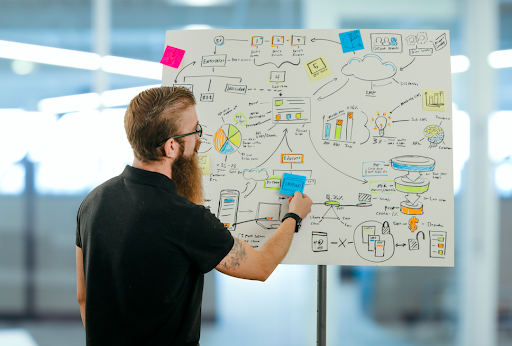Understanding the Customer Journey Map

Capturing leads is the holy grail of digital marketing. Businesses of all sizes hope that their website converts visitors—in other words, that prospects browsing a website will fill out a form, continue to evaluate information from the company, and eventually become a paying customer. However, this is easier said than done.
Prospects browsing the web have an almost infinite selection of material to answer their questions or meet their needs. Furthermore, as people increasingly access content online to evaluate products or services—whether for personal or business needs—they are inclined to do their homework before making purchases. More than 70 percent of B2B buyers fully define their needs before engaging with a salesperson, and almost half identify specific solutions before reaching out to a salesperson, according to research conducted by sales training company Miller Heiman.
This might seem like a challenge for any business. However, it creates an opportunity for a business to develop truly compelling content that educates and motivates a prospect to become a lead and, ultimately, a customer.
The Funnel and the 3 Stages of Buying
The buyer’s journey is often referred to as a funnel. At the top of the funnel is the broadest pool of prospects, many of whom are just beginning the process of trying to solve their problem. They are unaware of the costs involved or who the vendors are. Indeed, they are far from actually buying a product or service.
At the bottom of the funnel are prospects or leads who have decided that one particular company provides the perfect product or solution they seek. They are taking the final steps before deciding to make a purchase.
As outlined in the sections that follow, there are generally three different stages of the customer journey that map to the funnel:
- Awareness
- Evaluation
- Conversion
Stage 1: Awareness
In the Awareness stage, the prospect has a problem to solve but may be unsure of what products or solutions are available to solve their issue. Additionally, the prospect is not aware of who the solution providers are or what their prices might be.
Still, a company has an opportunity to capture the attention of these early-stage prospects and educate them before they become leads. Since people at this stage are interested in learning, a company can produce content that takes a big-picture approach to a problem or a general look at an industry. Such content might include the following:
- eBooks (titles include language such as “The Ultimate Guide” or “The State of the Industry”).
- Blog posts, with a prompt in the margin encouraging them to sign up for a newsletter
- Infographics, also with a prompt to sign up to receive more content
If a business captures a lead via content of a more general nature, then it is more likely that the individual is at the earlier stages of the buying cycle. Signing up for an email newsletter—a great way of capturing even just a tiny bit of information, such as an email address—is a good indication that a prospect is at an earlier stage in their decision-making journey.
Stage 2: Evaluation
In the Evaluation stage, prospects become aware of both the type of solution they need and the available offerings from different vendors. At this stage, the prospect has become a marketing qualified lead and requires nurturing to advance to the next stage of the customer journey.
Content that can best keep people interested at this stage should be more specific than the content provided in the Awareness stage. This content should include further details about a particular product and might include some rather technical information related to solutions that solve their problem.
Such content could include the following:
- Case studies
- Webinars
- Retargeting ads — the lead visited a website and then clicked on a retargeting ad
- Social media — the lead follows a company’s social media accounts and clicks on a link in a post
- Email newsletter content — the lead clicks on a link in a newsletter
The Evaluation stage also includes a step in which a user may agree to start using the free version of a piece of software or initiates a free trial period.
Stage 3: Conversion
Finally, in the Conversion stage, the lead has narrowed the playing field and has selected one solution out of a list of providers. The lead may have a few more questions that need answering before making a purchase.
At this stage, the lead may need extra incentives before buying, such as discounts or additional features and services.
The content would be extremely targeted to the buyer who is well aware of the solution provider’s capabilities. Such content might include:
- A mock-up or wireframe of what an engagement might look like
- Screenshots, with redacted data, of another customers’ instance
- A worksheet demonstrating TCO (total cost of ownership)
The buyer may also be part of an internal team that evaluates all vendors. As such, different versions of content may need to be developed that speak to the pain points of various stakeholders in the client’s organization.
Conclusion
Customer acquisition is trickier than ever; understanding the customer journey map is crucial.
Companies of all sizes can create their own customer journey maps based on the particular behaviors of how their typical customers make a purchase. How does a customer evaluate products or solutions? What are their go-to resources for learning? How much are they willing to spend or what are their budgets?
By first understanding the buyer persona, a company can decide what types of content make sense at each stage of the buying cycle. Testing—seeing what’s working and what isn’t—is also important for success.
Providing the right content at the right time can help companies of all sizes convert passive browsers to prospects, then to leads, and—finally—to customers.
